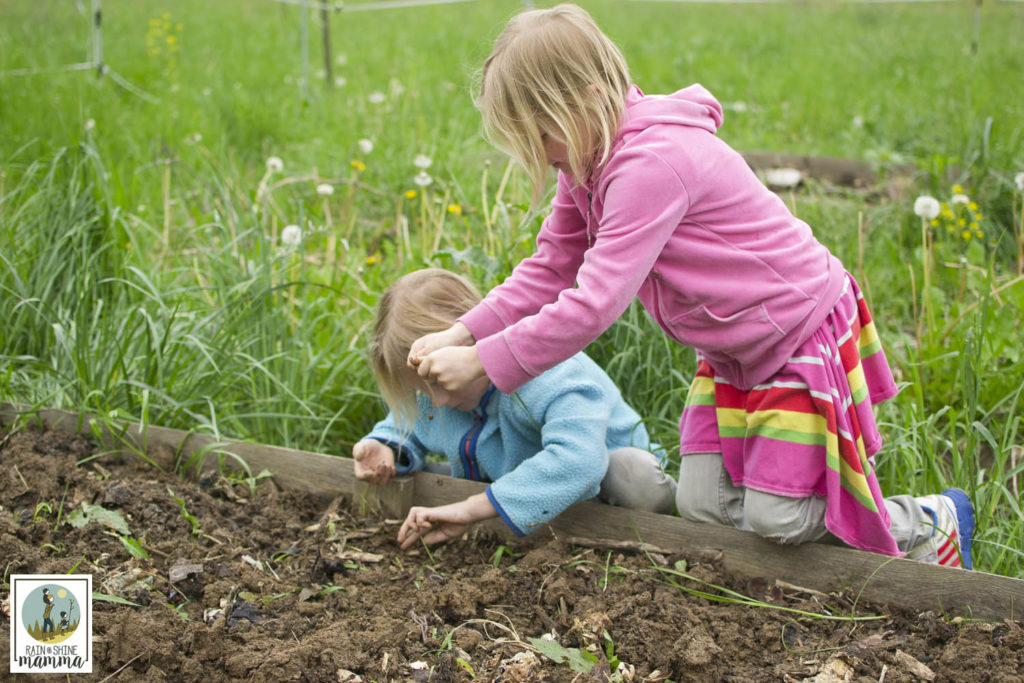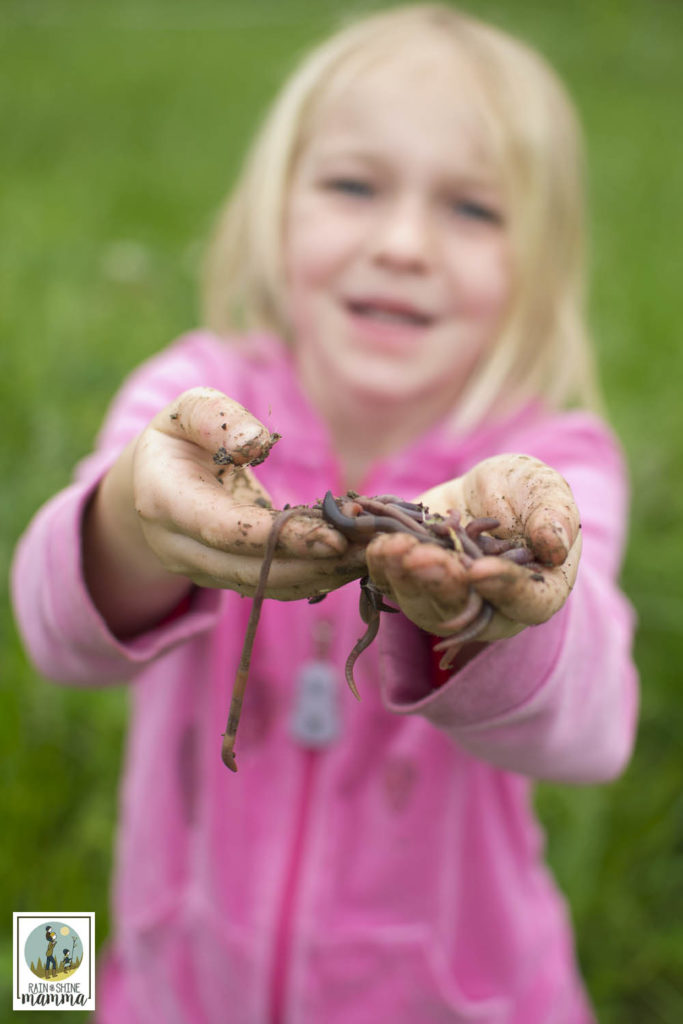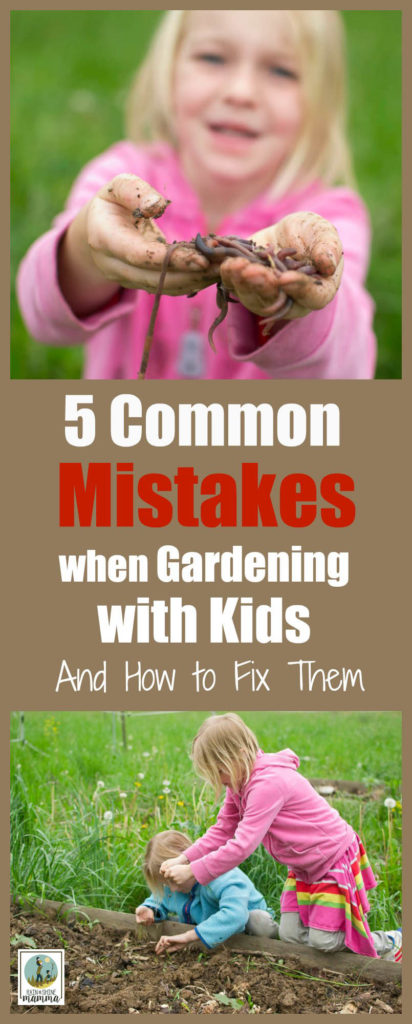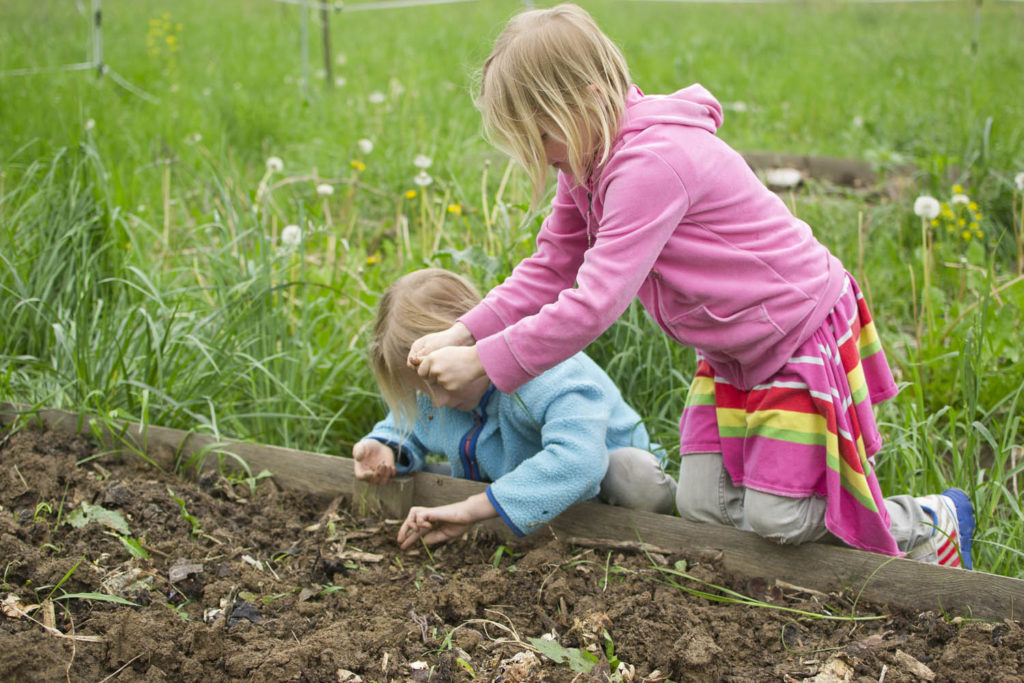I’m not a pro gardener by any means. If I were to rate myself and my gardening skills on a scale from ‘total newbie’ to ‘awesome expert’ I would probably wind up somewhere in the ‘mediocre’ range. While this used to bother me, I’ve never let it stopped me. (I explain why I’ll die trying in The Top 5 Reasons to Garden with Kids – Even If You Have a Black Thumb.) Not only is gardening with kids a great way to spend time together as a family; growing crops can also be a powerful way for children to connect with nature and the food that they’re eating.
But gardening with kids is not the same thing as gardening by yourself. Children enjoy poking around in the garden for other reasons than adults, and they often have a completely different way to go about it. To increase your chances of successfully bringing your crops to harvest with little ones in tow I’ve gathered the collective wisdom from some of my favorite expert gardeners. Follow their advice and chances are you’ll truly enjoy this gardening season!
5 Common Mistakes When Gardening with Kids – And How to Fix Them
1. Being too quick to say “no”
Kids love to dig and help with all sorts of tasks in the garden, but sometimes their activities clash with our adult sense of aesthetics (and our plants’ chances of survival). If your child is planting seeds in crooked rows, harvesting crops by pulling out the entire plant or trampling vulnerable seedlings, you’ll undoubtedly feel the urge to say “no.” Sometimes this is necessary, but too many “no’s” and a child could quickly lose interest in gardening.
How to fix it:
Dawn Suzette Smith of Mud Puddles to Meteors says that using scissors for crops like chives and baby greens was the answer when her children were too rough on the plants during harvest. “For bigger things we’ve had to use a knife or teach the kids how to twist the fruit or veggie off the plant or tree.”
For younger children, redirecting the enthusiasm to a different activity can be a solution. “While I don’t want my son to kill my seedlings by stepping on them, I also don’t want to discourage him,” says Shannon Shea of We’ll Eat You Up, We Love You So, who gardens with a toddler in suburban Washington, D.C. “So far, the best tactic has been to give him a job that’s important but won’t harm anything if he does it wrong. He waters the blueberry bushes using his own little watering can and pulls weeds along the fence of the garden.”

2. Starting too big
It’s easy to get carried away and overstock when the seed catalogs start showing up in the mail, or get a sudden impulse to double your garden space overnight. But take it from somebody has done both: chances are you’ll stretch yourself too thin. As any parent knows, adding children to this mix won’t help.
How to fix it:
“Start small so you don’t get overwhelmed and quit. If you love it, expand it in following years,” advises Christina Kemp, who runs a small family daycare in Oklahoma. “Your soil is the most important thing, so spend your time and money on that. It will make or break your results,” says Christina, who blogs about gardening with children on her blog Little Sprouts Learning.
One way to make the most of your space while keeping your growing area manageable is to use raised beds or make a square foot garden.
3. Not letting the kids take ownership of the garden
If you gardened prior to having kids, chances are you already have a routine for planning, planting, maintaining and harvesting your crops. But if you don’t let your kids participate and take ownership of this process, they’re less likely to take interest in it.
How to fix it:
“Let your kids look over the seed catalog with you and go to the garden center to pick out what they would like to grow. This will give them a plant or two to care for in the garden,” says Dawn, who has been fascinated with gardening since she was 10. “Letting them pick recipes can also be a great way to get them thinking about how these plants become food. And, of course, having them help with the preparation of a meal filled with ingredients plucked from the garden is priceless.”
Shannon says she always involves her son in starting seeds, even though he drops a lot of them on the floor. “Starting seeds is particularly great because it gets him involved from the very beginning of the process. Reading books about gardening is also great because it introduces a lot of relevant concepts and builds excitement.”
If you have the space, you may even want to consider giving your kids their own space to care for. “I recommend setting up a family garden for growing food and a children’s garden,” says Noreen Greimann of Entangled Harmony, who has gardened since childhood and now runs her own gardening program for children. “That way children can dig and grow to their heart’s desire, while also learning about growing vegetables from seed to harvest in the family garden.”

4. Making the garden a chore
While it is true that many children enjoy tinkering in the family garden, this could change quickly the minute their participation becomes mandatory rather than a free choice. Although in some families older children are needed and expected to help with growing the family’s food, this isn’t necessarily the best way to keep younger children passionate about it.
How to fix it:
Use your own awe and sense of wonder to get your kids to be enthusiastic about gardening, and let them choose which activities to participate in. Christina, whose daycare children, aged 1-4, help raise food in the garden says she never forces them to participate. “They aren’t all sitting in a row planting and harvesting everything at the same time together. They come in and out of the activity just like any other thing we do. They definitely won’t get more excited by me forcing them, so I just let them do their own thing,” she says and adds that she does most of the weeding.
Noreen uses storytelling to keep her children from getting bored with gardening, especially during times when there’s not much going in the garden and watering feels like a chore. “Tell a story about a little seed that needed to drink every day and then suddenly burst out of its shell, pushed through the soil and was greeted by the sun. Or how about a story about earthworms?”
5. Setting your expectations too high
If you expect your kids to tend to the garden like perfect little worker bees, you may be in for disappointment. Gardening with kids can be a lot of fun, but at times it can also be trying and frustrating when you don’t get the desired results.
How to fix it:
“Make sure you’re well prepared ahead of time and be patient,” advises Christina. “Kids will make mistakes, we do too, so don’t expect perfection. They are learning.”
And those crooked rows? You may just want to let that one go. A child’s garden may not live up to your aesthetic expectations, but your seeds won’t care. They’ll sprout even if they’re not in a perfectly straight line.




I don’t have kids or am a parent but I still appreciate your blog because it is always refreshing to hear about getting kids outdoors. I am however I Scout Leader and like to work with youth with disabilities or challenging behaviors. The insights you have into encouraging getting outdoors have served me well in a multitude of situations.
I’m so pleased to hear that you feel inspired by the blog. Mark! I do try to speak not just to parents but anybody who cares for or educates children. Thank you so much for taking the time to comment:o)
We have had plenty of crooked rows, plants pulled out instead of weeds, stories told, some belly-aching and complaining, but most of all memories made with catching worms and with the boys, mud baths. The perfect garden has plenty of weeds, bugs, deer and rabbits. Just make sure you plant enough for everyone! Love this article.
Thank you, Jenny! I’m amazed that I got anything at all out of my garden this year, considering that I was gone for six weeks, and my tomatoes were attacked by tomato horn worms (as usual…), but I’ve been picking plenty of tomatoes, potatoes and squash. A lot of it just self-seeded from my compost too:o)
Thanks for this article. To my surprise, my daughter just loves flowers and gardens. She loves watering our plants and playing with mud. This summer I wanted to indulge myself in some activity with my daughter and what could be better than gardening. I will surely teach her how to grow your own food this time. I hope she would be as excited as I am.
Great tips! Let the children take part on sustainability! Hai ho!
Thank you! Gardening is definitely a good introduction to sustainable living:)
My biggest problem was always wanting to do everything myself so everything would be “perfect”. It’s okay to make mistakes and it’s okay for things to be imperfect 🙂
Yes, absolutely. And that takes practice, especially if you’re a perfectionist like me:)
This is such a cool post! The kids often end up doing (or messing) things in their own little ways & never listen to adults. But that’s the fun part & now I know some good tips. Thanks!
Thank you, Sarah! Yes, I do think it’s important to give kids the space and time to tinker on their own in the garden:)
I am wondering how to balance between house chores with kids and gardening. I dont have kids yet but already overwhelmed not sure it i will cope if I do lol